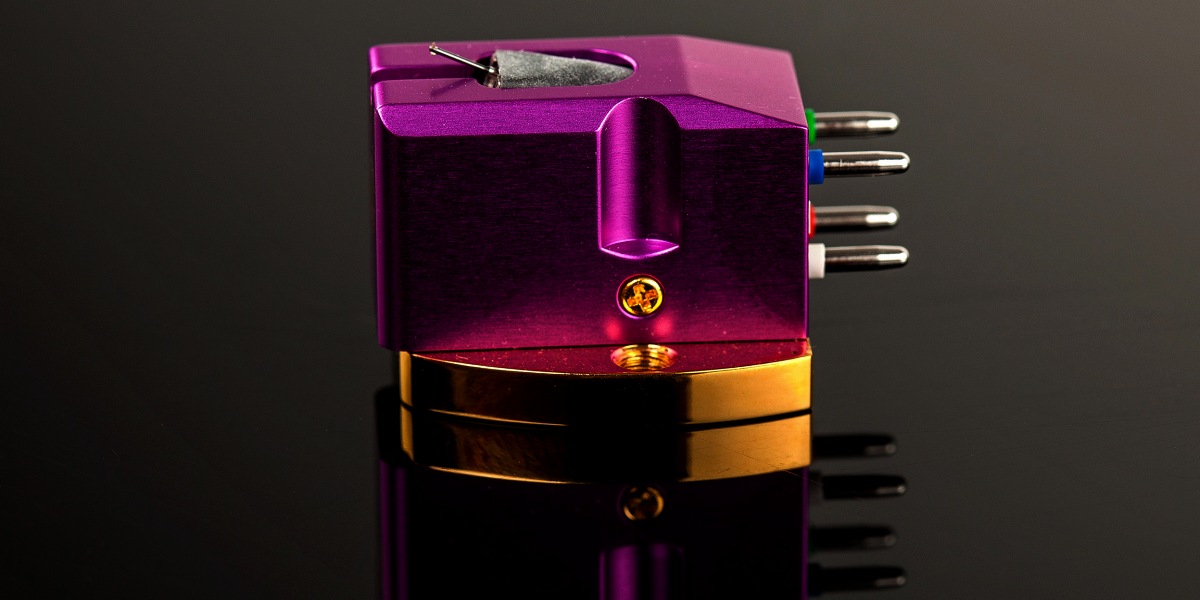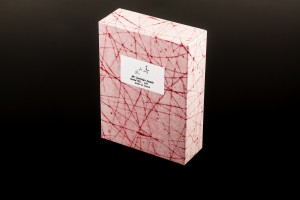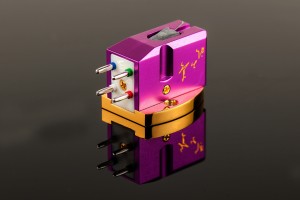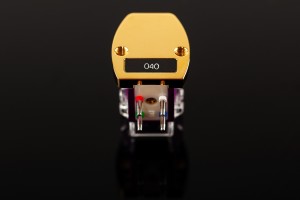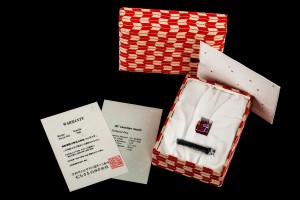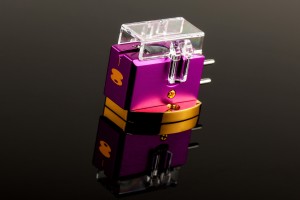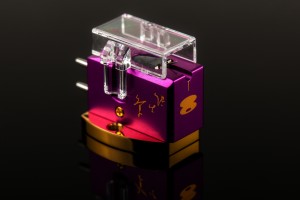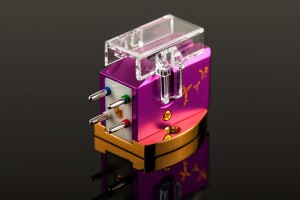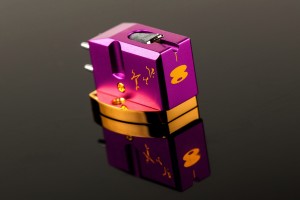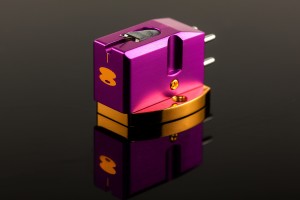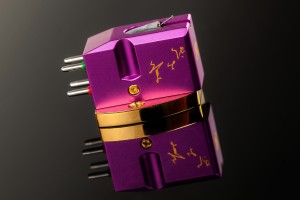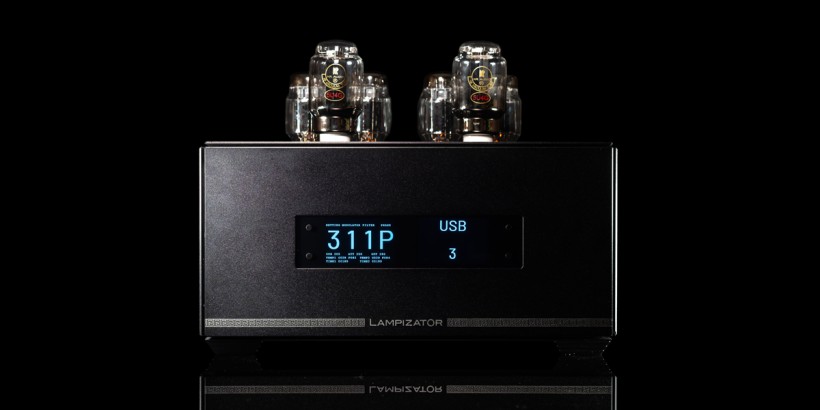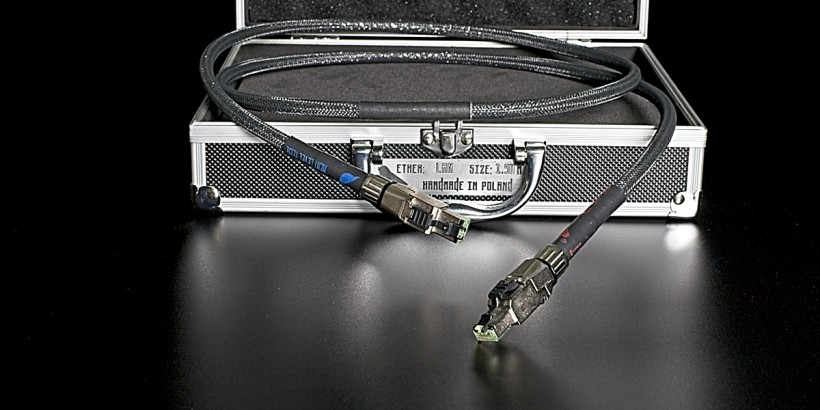Cartridges are one of the specialties of Japanese audio manufacturers. In fact, today most of them are made in the Land of the Rising Sun by a dozen or so exceptional craftsmen, or rather artists really. From time to time, even among them some “fresh blood” must appear and this is the case we are dealing with in this test. Let me present a review of the Murasakino sensational debut.
Introduction
I have to admit that when I received this pickup for a review from the Polish distributor, it was actually a complete mystery to me. I mean the name did not ring any bells for me. The box I got was small and, as almost always in the case of Japanese products, very nicely made, so that the customer who takes it for the first time in his/her hand immediately knows that this is a unique, luxury product. Audiophiles treat packaging of audio product in different ways. Some believe that the sophisticated, elegant ones are nothing but a waste of money. Other want to feel special from the very beginning, want to feel that the producer treats them seriously, with respect and expresses it already using the box his product is delivered in. While in the case of an amplifier or loudspeakers, the most important feature of whatever they are packed in is durability and ability to protect the product, so that it reaches the customer in perfect condition, the smaller components such as cartridges or accessories such as the beautifully packed Harmonix mat and record clamp (see HERE http: // hifiknights. com / reviews / harmonix-tu-800m-tribute-i-tu-812mx /), which are often small masterpieces, definitely deserve something more than a regular box. Especially when they come from Japan one can assume that already the first contact with them will provide an exceptional experience. This is also the case with Murasakino Sumile MC that arrived in a simple, elegant, but also intriguing box. Plus, which is also of great importance, it perfectly protects the delicate pickup.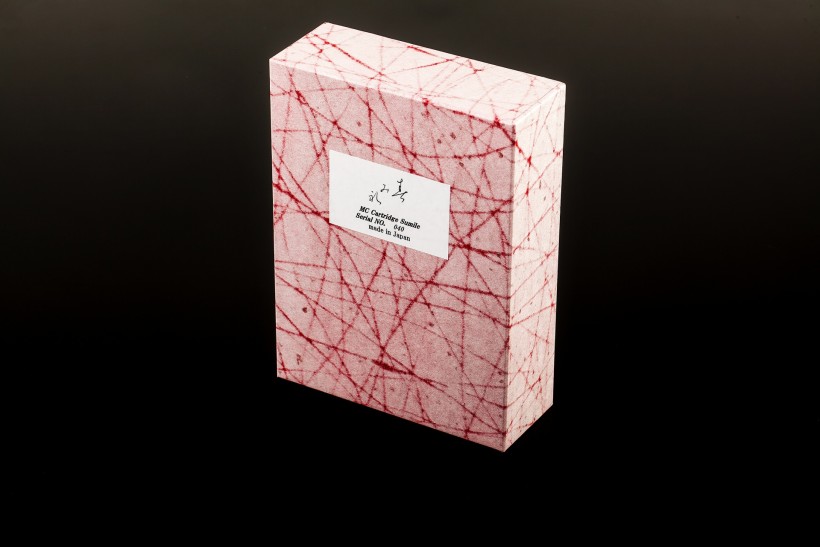
This aspect was somewhat anticipated considering the origin of Sumile MC, so the true surprise came after opening the box. Inside I found a cartridge of a rather… exotic, yet intriguing color. Although the Japanese name – Sumile – reveals what one can expect, but my (non-existent) knowledge of this language has not prepared me for this violet body with golden elements. This is probably the most original looking cartridge I have ever dealt with. Most look modest, not to say inconspicuous, at least for the layman’s untrained eye. In this case, the creator of Murasakino guaranteed his product the attention of everyone who would lay eyes on it. To be honest, violet does not belong to my favorite colors (same goes for gold), and yet I fell in love with Sumile MC at first sight, even before I started listening to it. Such a color choice could be considered as somewhat provocative, teasing, or rather as statement for the competition, sending a clear message: I am different and it is my advantage! As you can see, my adventure with this Japanese cartridge started same as most Hitchcock movies – with an earthquake – and then tension, although in this case it was rather relaxation and satisfaction delivered by Sumile MC, only built up.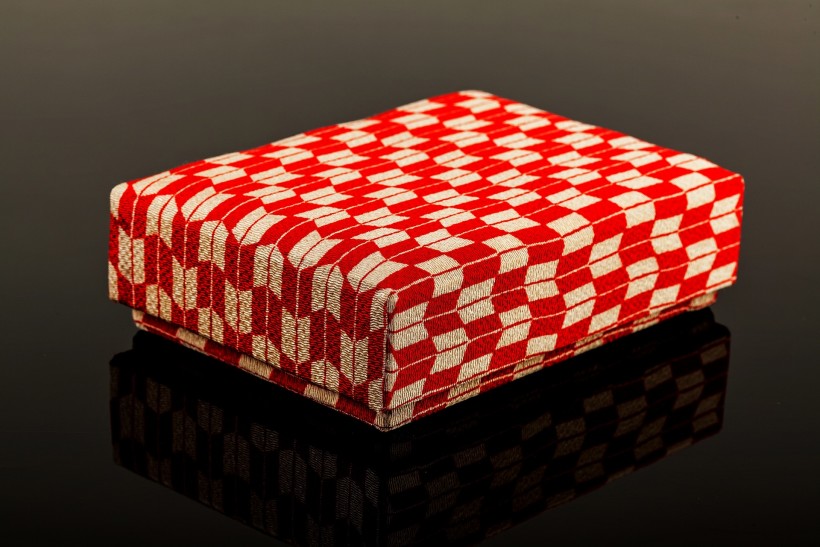
Before I started my listening sessions, I decided to look for information about the designer of this product. It is a rare case after all, of a new brand arising from nowhere and beginning their presence on the market with a big bang, or in other words with a product that is to compete with the best one offered by well-established competitors. The designer of Sumile MC is Mr. Daisuke Asai, who, as he says himself, started his audio adventure when he built a tube amplifier in his university days. Later he worked at Denon Lab, and then at A&M limited, which is better known under the trade name AirTight. It was there, under guidance of Mr. Ishiguro, where our designer gathered a large portion of his knowledge and experience. As if it was not enough, Asai-san is also an amateur musician – he plays oboe. I do not need to convince any of you that the knowledge of a true sound of real instruments is a huge asset when one is designing and building components that try to mimic live music. The time at A&M Limited allowed Mr. Daisuke to gather the knowledge and experience necessary in this industry, but it came at the cost of little, if any, free time for his own projects. So finally he made a tough decision and resigned from his position at AirTight to set up his own firm he named Murasakino Ltd. As already mentioned, he decided to enter the market “with a bang” by proposing a cartridge to compete with the best – Sumile MC. Does it really rise to that promise? Let’s see about that.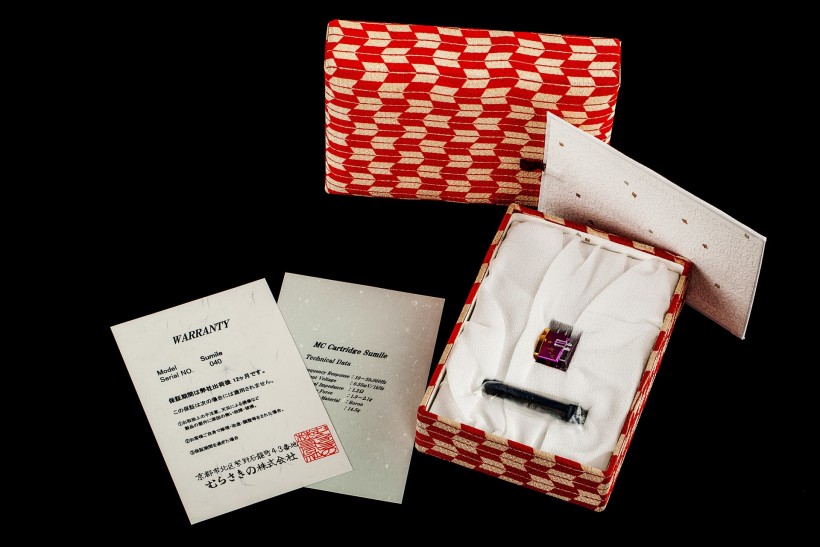
Design
As one reads on manufacturer’s website: „… Sumile is not lavished with superfluous technologies or rare materials. Instead, through our commitment to fundamental quality, it is the ultimate analog product.”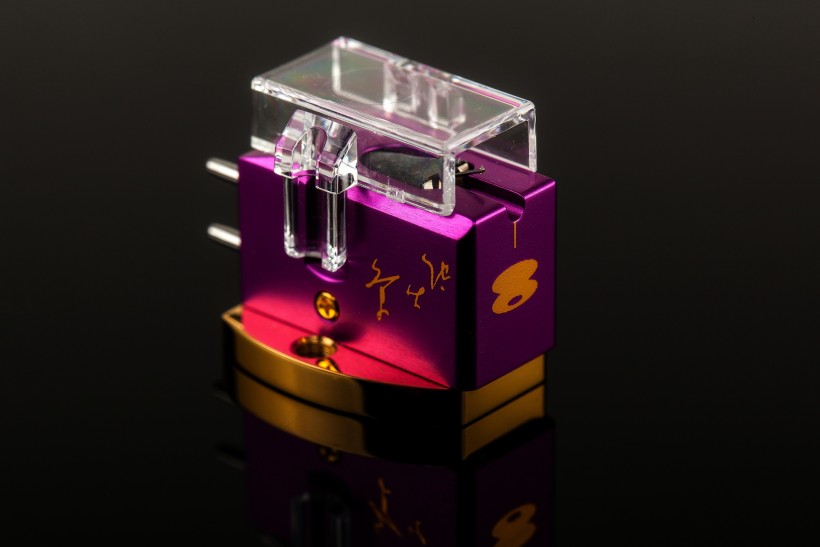
Sumile MC is, as the name already suggests, a moving coil pickup. Let’s add right away – it’s a cartridge with a very low internal impedance of only 1.2 Ω. This is achieved by a smaller number of coil turns. The solution seems simple, but has its consequences – the smaller impedance also means a lower output signal. A low output signal, in turn, requires usage of more gain (in the phono preamplifier), which leads to a higher level of (undesirable) noise and distortion. It is possible to design a high quality phonostage/step up transformer that can such job really well, and there are some available on the market. After all, Sumile MC is not the only pickup with a low output signal. However, a slightly higher signal from the cartridge allows user to choose his phonostage/step up from a wider variety of available models. Mr. Asai, in order to avoid the problem of a need for a high gain, made sure that despite the low impedance, his product offered a relatively high output of 0.35 mV. This value allows Sumile MC to work properly with almost every MC phono preamplifier. It does not change the fact that it should be paired with the best possible partner to use its full potential.
Materials used in the construction of this cartridge have been selected with the best possible performance in mind. Therefore, the base of this pickup, i.e. the upper plate (which is the interface between Sumile MC and a headshell) and the inner part which the generator and coil are attached to, were made of stainless steel (not aluminum, as in most cartridges). Steel is a material more rigid than aluminum, which is an advantage, but is also more difficult to machine and therefore it is not so popular as aluminum. In this particular case of a product which is supposed to compete with the best available of its type, the surface of steel elements was additionally gold-plated. The idea came from wind instruments, for which such a procedure is performed to obtain the desired resonant frequency of the material, which translates into a better, more natural sound. Although I did not find this information on the manufacturer’s website, it seems that the outer, violet “shell” or body of the cartridge is made of aluminum. Sumile MC features a neodymium magnet, a boron cantilever and a semi-contact diamond stylus. It is also equipped with a removable stylus protector. In the box, in addition to the cartridge, one finds screws and a key that can be used to fix it in the headshell.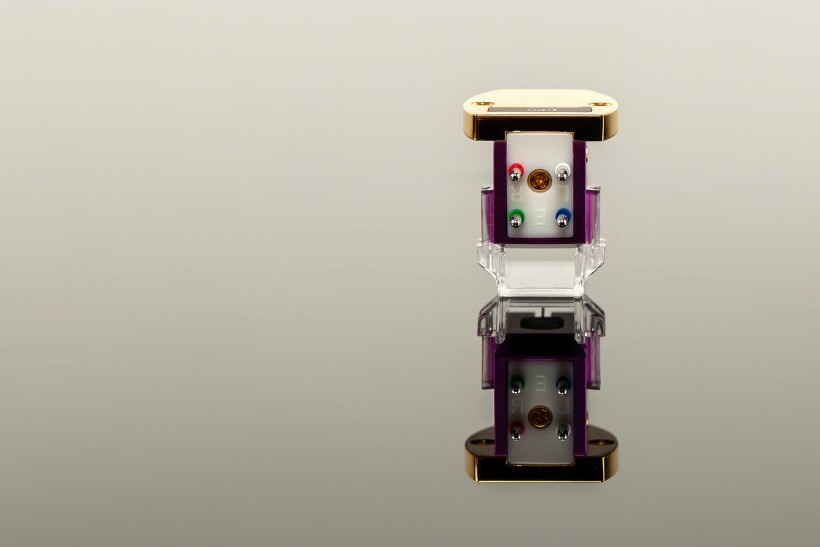
Sound
I received a brand-new unit for the review, so it was clear it would take at least a few dozen hours to break-in. Usually when you start to listen to a new pickup you can clearly hear some limitations. The sound is not particularly open at first, it is a bit “fogged”, missing details, lacking in richness and resolution, bass tends to be “too light” or not fully controlled, and so on. All these elements appear in sound after some time, when the whole mechanics of the cartridge settles down and starts to work optimally. Therefore, when I get a completely new pickup I often use a special record prepared by a German specialist, Clear Audio, which accelerates the process of breaking-in. It is a matter of certain signals stored in the vinyl grooves, which force the stylus and its suspension to work intensely thus accelerating the process of breaking-in.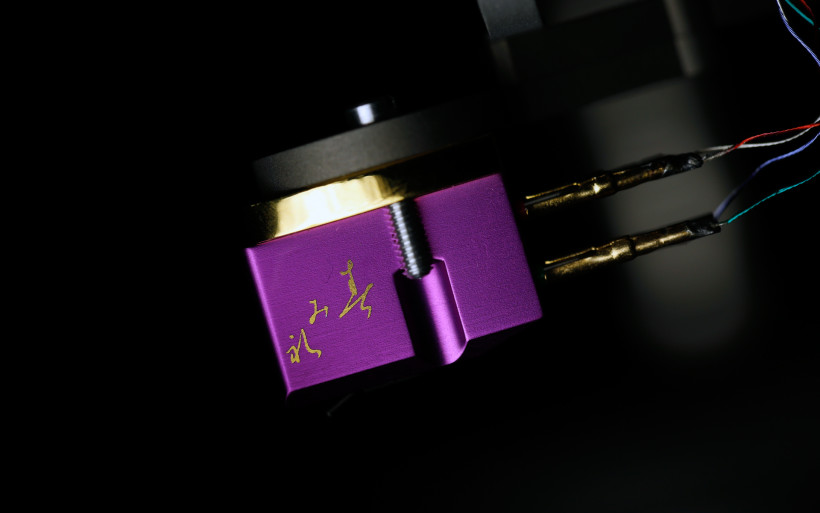
This time, however, my curiosity won – after all it’s not every day that I have a chance to listen to a completely new product of a brand I don’t even know which in this particular case had already made some fuss on the quite hierarchical market. So after a thorough set up process performed using the Acoustical Systems SMARTractor template, I decided to at least get some initial impressions of this small violet Japanese piece of art. I installed it first on the Cantano T arm mounted on the Cantano W deck. During the test I used my excellent GrandiNote Celio mk IV phonostage (see HERE) but also one of the best there are, the brilliant Tenor Audio Phono 1. Later I moved Sumile MC to my JSikora Standard Max turntable with the Acoustical Systems Aquilar tonearm and KBL Sound Red Eye Ultimate Phono cable (see review HERE).
As I’ve recently realized I had already reviewed probably close to a thousand various audio components, and only a very small percentage of them made such a huge first impression, as the Sumile MC did. On the short list of devices that managed to achieve that one can find such big names as: Kondo Souga and Kagura, the aforementioned Tenor Audio Phono 1, LampizatOr Golden Gate, Ypsilon VPS100, AirTight PC3 and maybe 2-3 others. It’s worth noting that I received all of them for tests fully broken in, which definitely worked to their advantage. As you can see from the very beginning, the Murasakino cartridge landed in my private hierarchy of the most impressive components along few top devices. The longer I listened to it the more sure I was that it really belonged there.
These first impressions from the listening session with Murasakino Sumile MC were very different from the above mentioned experiences with other new cartridges. This time starting from the very first record I was amazed by a huge flow of information that the stylus was already able to read from the groove. Also the purity and transparency of the presentation was remarkable. It concerned mainly the upper part of the range, which was already incredibly resolving, open and airy, yet smooth, without even a hint of aggressiveness and, surprisingly (because of pickup’s novelty), any grain. Shortages, if you can even call them that, during the break-in process were audible primarily in the lower midrange and bass, which I perceived as lacking some weight and richness, although the control of lower end was already very good. Even in this situation, resulting in a slight shift in tonal balance, I did not perceive this sound as too bright or dry. The resolution was impressive, the sound from the very beginning was nicely layered, and even those deeper layers, that more often than not lack precision, were rich with details. Although some aspects of the sound were not (yet) perfect I decided not to lose any time for the aforementioned Clear Audio break-in record. Instead I preferred to enjoy the music and in some cases even rediscover well-known titles.
Because of this decision I could observe the process of Sumile MC’s break-in for the next few days. The sound gradually saturated, gained weight, so to speak, the lower bass that initially was only gently indicated, ultimately got its power and slam and was able to deliver even at the great symphonic orchestra’s tutti, or when the guys from AC/DC performed their energetic, powerful interpretation of rock ‘n’roll. Gradually, the tonal balance shifted down, and finally it reached the “nominal” position, known as neutrality and remained there. Unlike in some other cases of “neutral” sounding components I did not perceive the sound as cold, it was just exactly the way it should have been – natural, fluid and coherent.
The smallest changes during the break-in process took place in the upper part of the band. The incredible flow of information, openness and ingenious resolution remained, although they were supplemented with sort of elegance, class, something that made me stop thinking about these features but rather enjoy the sophistication, delicacy, and power (when needed) of upper midrange and treble. Such a combination of sonic qualities may seem impossible, but in this case the treble was sometimes velvety, wonderfully conveying wonderful delicacy of a sobbing violin, for example, only to later deliver in an equally convincing manner a sharp, powerful, energetic, almost aggressive sound of a trumpet, or deliver breath taking performance of a drummer crushing on cymbals like his life depended on it. In other words, Murasakino Sumile MC was able to deliver relaxed, subtle, refined sound, but when needed it kicked, punched and bit delivering energetic, thrilling and yet amazingly well controlled performance.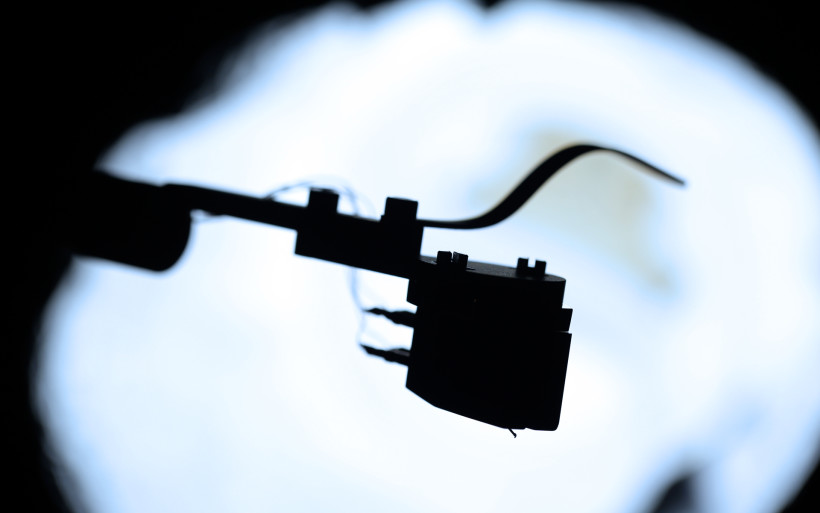
With the progress of break-in process, Sumile MC further improved its performance in such areas as timbre differentiation and micro and macro dynamics. Also, the incredible from the start flow of details and subtleties kept growing revealing, among other things, more and more acoustic cues hidden in recordings, to an extend very few cartridges I know could compete with. It happens that a tested device reveals to me some previously unknown details on the recordings I know almost by heart, but these are extremely rare cases that happen only with top devices (so simply put – better than the ones I own). So it was clear to me already at this stage, that Murasakino Sumile MC belongs to this unique category of audio products, that not only manage to delight listener with outstanding performance, but are also able to offer a new level of personal musical experience.
One of the elements of this presentation, that delighted me more and more with almost every album, was this absolutely unforced, unrestricted delivery of virtually any music. It did not matter whether there were just two acoustic guitars, a solo vocal, a string quartet, a rock band or a huge symphony orchestra. The Sumile MC behave like a duck in water regardless of genre. The only condition that had to be met was at least good (not necessarily very good, just good) quality of the recording and pressing, and a decent physical condition of vinyl. Whenever I placed such a record on a platter and lowered the stylus into the groove, regardless of whether it was RCA, Decca, Three Blind Mice, or even Polish Recordings release, the Sumile MC was able to extract from it layers and layers of information and use them to create a smooth, vivid and remarkably musical whole, that kept a smile on my face whole day long. In this regard, it reminded me of my own AirTight PC3, that also didn’t care much for music genre. Yet, although the purchase of the PC3 was at the time a dream come true for me and only a very few cartridges I knew were able to match or outperform it so far, this time I did not have even the slightest doubt that Sumile MC delivered performance from another dimension. A good physical condition of the played records mattered because it guaranteed a minimal amount of pops&cracks, which, even if they appeared, were delivered in a way that did not come between me and music. However, when I happened to use a dirty record or one with a significant scratch, Murasakino quickly reminded me that it wasn’t a good idea.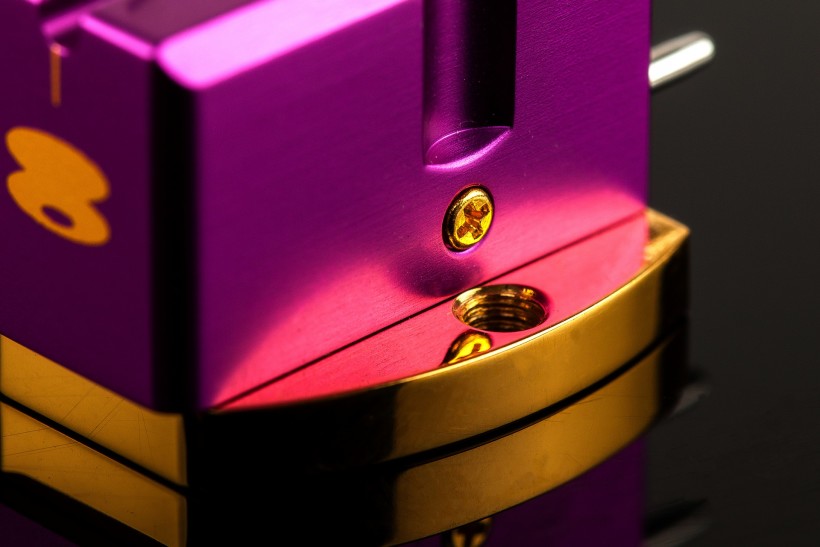
Regardless of whether Sumile MC worked in the Cantano arm on Cantano’s deck or in Aquilar on my excellent JSikora, it delivered a similar, sky-is-the-limit level of sophistication, equally excellent insight into the music being played, and it seemed to always keep me engaged in musical experience. There were some differences – with my mass-loader turntable and a gimballed arm sound seemed even more dynamic, richer, had more weight. On the excellent Cantano with its unipivot tonearm, the sound was even more open, and the acoustics of many recordings was presented in a more convincing way. That’s why, for example, Rodrigo and Gabriela’s album, with their amazingly dynamic, energetic guitars that when played using Sumile MC reminded me of the excellent Warsaw concert of this duo, sounded a little better, more convincing on JSikora. The presentation was on one hand incredibly powerful, vidid, keept me on the edge of my seat, on the other there was an absolute control over everything that was happening on a small but realistically rendered stage. Many audio devices are able to show the heavy-metal souls of these excellent musicians, but reproducing this particular intensity of the performance, evident chemistry between theese two guys, and this huge dose of energy produced with just two acoustic guitars, that’s something only the very best components/systems are able to do in such a realistic, true manner. My turntable with the excellent AirTight PC3 does it perfectly, or at least I thought so until Sumile MC proved to me that it was able to do the job even better, to extract even more information from the groove of the very same record and then use them to render even more exciting, more present performance.
When it came to Vivaldi’s “Four Seasons”, the remarkable elegance, refinement and the Cantano’s ability to present even the deepest layers of music, proved this turntable to be even better partner for Sumile MC for this type of classical music. Wonderful flow of music, perfect harmony of all instruments, lots of air between them, nicely conveyed emotions and mood of each season – all these elements were advantages of Sumile MC working on this turntable. On my favorite “Carmen” with Leontyna Price, the power, energy and size of the orchestra on JSikora were even more impressive than on Cantano, while the latter delighted me with immediacy of the sound, the huge soundstage that was even deeper than on JSikora and the singers in the foreground were even more tangible. All these differences between what Sumile MC delivered depending on the turntable it was paired with, were actually quite small, and they came rather from sonic qualities of decks and arms. Murasakino brilliantly utilized its key attributes regardless of turntable it was used with. I mean the exceptional purity and transparency of the sound, also lack of any coloration and simply stratospheric resolution. In both cases (with JSikora and Cantano) Sumile MC played my favorite records in a way, the only a handful of the top performing cartridges could (try to) match. Some of these recording had never sounded so good before.
Mind you that these are two very different decks and tonearms and yet the Japanese pickup performed remarkably on both of them. Which proves that whatever turntable you have, as long as it is capable of delivering top performance, Sumile MC should be a perfect match for it. Fortunately (for me) I don’t have to choose between JSikora and Cantano as a partner for the reviewed pickup. First of all I already have the former, secondly for now I can’t afford to buy Sumile MC, thirdly such a choice would be very difficult because both systems belonged to the best of the best. I guess it might be the case with most top-tier record players. With the Japanese cartridge they will constitute a dream analogue system. Certainly mine, but give it a chance and I bet you will share my opinion.
Summary
Actually, I could sum up the review of Murasakino Sumile MC in one simple sentence – this is the best cartridge I have ever listened to. Period. Although I have not had a chance to audition many top competitors, I will still dare to claim that it is one of the best pickups money can buy today. It’s expensive – it’s true – but it also offers a rare combination of features highly sought by those in persuit of the best possible or in other words ultimate sound. For many it will be reason enough to reach deep in their pockets and pay whatever they are asked to.
It’s an incredibly resolving cartridge. It delivers a pure, transparent and well-balanced performance, that at the same time is beautifully smooth, musical and engaging. It perfectly differentiates even subtle changes in tonality, pitch and dynamics. When needed, it will deliver a refined, nuanced performance to convey the richness and complexity of a beautiful voice or solo instrument. But when asked for it, it will burst with unrestricted energy to deliver in perfectly organized, controlled manner the power of rock band or the orchestra. It creates a large (in each of the three dimensions) and precisely laid out multi-layer soundstage, with deeper leyers only slightly less detailed than the foreground. Sumile MC beautifully renders tangible, three-dimensional phantom images that seem very “present”. One can (almost) feel the chemistry between musicians and easily gets emotionally involved in the music spectacle so convincingly laid out in front of him. The sound is rich, saturated, informative down to the tiniest subtleties, but details never steal the show. It is always the music that is in the center of listener’s attention simply bacause it is so exceptionally realistic and natural, that each session turns into a truly transcendental experience.
I wish I could witness more such sensentional debuts on the audio market in the future although I personally would prefer them to be more affordable. It’s how it works though in the real world – the efforts put into developing a product offering top performance on one hand, and such an authentic, thrilling, immersive musical experience on the other, simply have to be adequatly awarded. Once I set a goal to own the AirTight PC3 cartridge. It took me a while, but here I am, a happy owner. Now I have a new one to persue – to own Murasakino Sumile MC. It probably won’t happen any time soon, but one day it will. If you’re on the market for a cartridge offering utlimate performance give Sumile MC a try. It is definitely worth your time!
Since this is the best cartridge that I’ve had a pleasure of reviewing I simply have to award it with our Victor!
Technical specification (according to manufacturer):
Type …. MC
Cantilever …. boron
Frequency range …. 10 – 50.000 Hz
Output signal …. 0,35mV / 1kHz
Internal impedance …. 1,2Ω
VTF …. 1,9g – 2,1g
Weight …. 14,5 g
Associated equipment:
- Analogue front end: J.Sikora Basic MAX turntable, Acoustical Systems Aguilar tonearm , AirTight PC-3, Cantano W deck, Cantano T arm, phonostages: Grandinote Celio mk IV, Tenor Audio Phono 1
- Power amplifier: Modwright KWA100 SE, GrandiNote Shinai integrated, Thöress EHT integrated
- Preamplifier: Audia Flight FLS1
- Loudspeakers: Ubiq Audio Model ONE Duelund Edition
- Interconnects: Hijiri Million (RCA), Less Loss Anchorwave (RCA), KBL Sound Red Eye Ultimate Phono
- Speaker cables: LessLoss Anchorwave
- Power cables: LessLoss DFPC Signature, Gigawatt LC-3
- Power: Gigawatt PF-2 MK2 and ISOL-8 Substation Integra; a dedicated power line with Gigawatt LC-Y in-wall cable; Gigawatt G-044 Schuko and Furutech FT-SWS-D (R)
- Racks: Base VI, Rogoz Audio 3RP3/BBS
- Anti-vibration accessories: ROGOZ-AUDIO SMO40 and CPPB16 platforms and ROGOZ AUDIO BW40MKII feet, Franc Accessories Ceramic Disc Slim Feet and Wood Block Platform
Retail price:
- Murasakino Sumile MC: 8.000 EUR
Manufacturer: MURASAKINO AUDIO
Distributor: Audio Atelier


